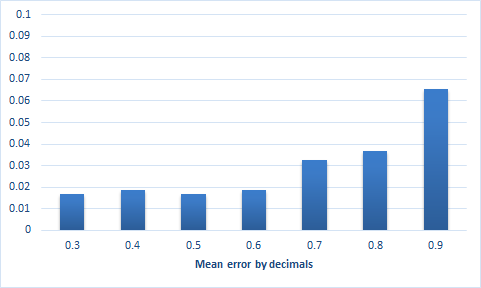When I was a child, I remember watching “futurist” movies, characters using super technologies in their daily life, some far from reality yet (or not) like holograms, and others that little by little are consolidated in our daily life, like intelligent gadgets able to expand the info or to answer our questions. At that moment I believed: It will be a day that what once was a movie ever come true? And that day has arrived.
Recently, as an amateur cyclist, I always try to seek and use high-performance tools and innovations.
In this post I am going to talk about Spleeft, an app able to measure barbell velocity in real-time for squat and deadlift, based on augmented reality and artificial intelligence technologies, so that you don’t need any external devices, just your phone’s camera.
Three benefits of Spleeft for your training
Mean velocity in real-time without external devices requirement
Get close to your phone, adjust app performance (it guides you), and get the velocity of your exercises automatically. If you don’t know all the advantages of velocity-based training, keep reading to discover them. You also have the chance to use an individual and constant range of motion or to set it automatically for each lift, based on quick anthropometry that you will have to do. Click to see a quick demonstration.
Fatigue control between and during sessions
Spleeft can set velocity loss during a series too so that you can adjust the character of effort required for your workout and have enough energy for other specific training.
In addition, you have the chance also to measure your 1RM based on a load-velocity profile and to adjust it daily with a quick test, so that you can control the fatigue with which you arrive at the session, adjust the training load to your physical status, and to keep training intensity constant, optimizing your workout at maximum.

Resistance training tracking
Each series and test will be saved in the history, which will allow you to control and quantify your resistance training like never.

Machine learning and augmented reality in your training
Spleeft uses a scientifically validated Machine Learning model that was developed for its efficient use in mobile technologies. It’s able to detect and track 33 corporal points accurately. That points are used by the algorithm to measure velocity and range of motion as accurately as your phone allows, besides being shown on screen to offer an augmented reality experience. Therefore, app performance will be proportional to the ability of your mobile to use the powerful model.
Reliable and accurate
To know the validity of our technology, apart from a lot of internal tests, we have carried out a little study in which we compared 100 different squats with three different devices: two Android phones (lower mid-range, Xiaomi Redmi Note 6 Pro, and Xiaomi Mi A3) where real-time velocity was tracked with Spleeft; and an Apple iPhone 7 which was used to record all the lifts at slow motion (240fps), to be analyzed then with another scientifically validated app, with the disadvantage that all lifts have to be analyzed manually.
Xiaomi Redmi Note 6 reached during the test a performance of 18fps approx. with a preview size of 240×160, while Xiaomi Mi A3 reached 20fps with 176×144 preview size. Therefore, although it will be necessary for more research, we observed that reducing preview size increases model performance. Both phones used accurate mode.
The results of this little research show a very high correlation between Spleeft and the validated app (r=0.97), data that would provide validity and reliability to Spleeft. The correlation between Android phones where Spleeft was run was very high too (r=0.98), which means that data is consistent at different devices with adequate settings.

Pearson’s correlation coefficient (R) measures the relationship between two variables, one being the perfect relationship. Therefore, it tells us how predictable one variable is from another.
As for the error, both phones got a mean error of 0.03 m/s. Analyzing them minutely, it was found that the mean error is lower with slower lifts between 0.3–0.7 m/s (error of 0.02 m/s), increasing a bit between 0.7–0.9 m/s (error of 0.03) and rising until a mean error of 0.06 m/s with higher velocities, never being a significant error.

In conclusion, it can be observed that Spleeft can be useful and valid for practitioners and amateurs that need to optimize their resistance training but can’t afford a linear encoder.
Hope you enjoy it!
You can try the DEMO version here or download the FULL version here.